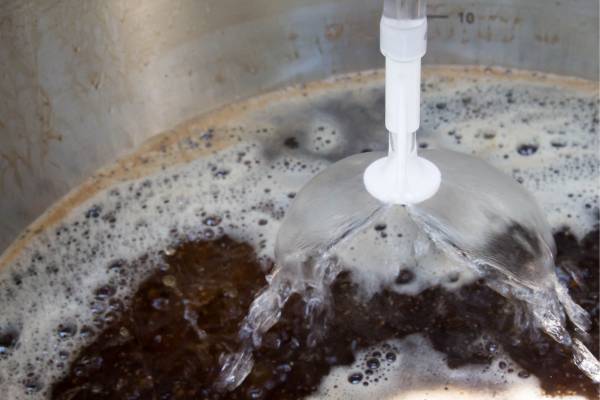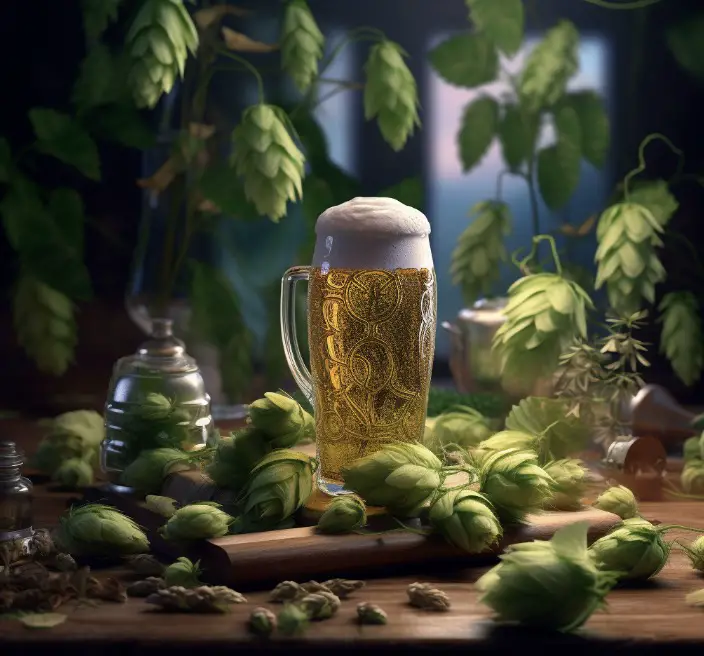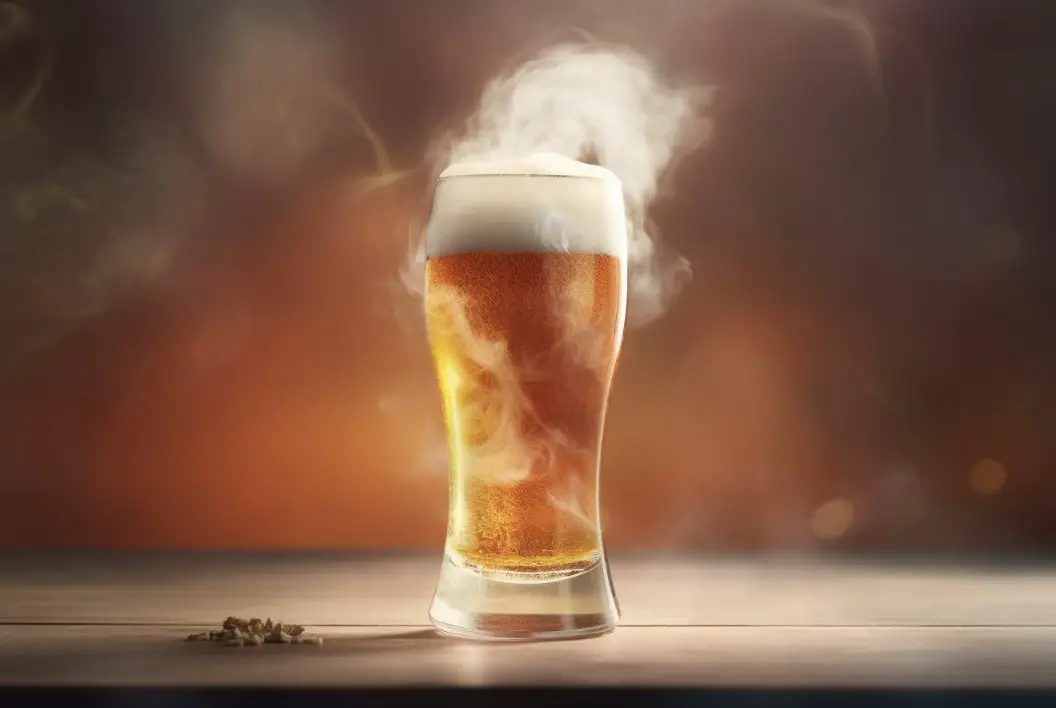Astringency is an undesirable quality in beer that can be described as a dry, puckering sensation on the palate, similar to the feeling you get when you drink over-steeped tea or bite into an underripe fruit.
It can be caused by a variety of factors, such as the presence of tannins, polyphenols, and other compounds that are extracted from grains or hops during the brewing process.
The good news is that astringency can be fixed with the right knowledge, techniques, and attention to detail.
In this blog post, we’ll explore various methods to fix astringency in beer, so you can enjoy a smoother, more enjoyable brew.
Causes of Astringency in Beer
Before delving into how to fix astringency in beer, it’s important to understand its root causes. By identifying the source of astringency, you can better tailor your approach to addressing it.
Homebrew can become astringent due to several reasons. One common cause is excessive tannin extraction from the grains during the brewing process. This can occur if the grain is crushed too finely or if the mash temperature or pH is too high.
Another possibility is over-sparging, which can lead to tannin extraction from the grain husks. Additionally, prolonged contact between the beer and the trub (sediment) during fermentation can contribute to astringency.
Finally, the addition of hops, oak chips, or certain contaminants can also contribute to tannins in beer.
The following factors can contribute to astringency in beer:
1. Over-sparging
Over-sparging is one of the most common causes of astringency in beer. Sparging is the process of rinsing the grain bed with hot water to extract sugars and other compounds from the grains. If you sparge too long or use water that’s too hot, you’ll extract more tannins and polyphenols, which can lead to astringency.
2. High mash pH
A high mash pH can also contribute to astringency in beer. The optimal pH range for mashing is 5.2 to 5.6. If your mash pH is higher than this, it can cause increased extraction of tannins and polyphenols, leading to astringent flavors.
3. Over-crushing grains
Over-crushing grains can also cause astringency in beer. When grains are crushed too finely, they can release more tannins and polyphenols during the mashing and sparging process. To prevent astringency, ensure proper grain crushing, maintain appropriate mash temperatures, avoid over-sparging, and minimize contact with trub.
4. Excessive hopping
Excessive hopping can cause astringency in beer, especially when using high alpha acid hops or adding them late in the boil. Hops contain polyphenols, and adding too many can lead to astringent flavors.
5. Oak cask storage
Storing your beer in oak casks or adding oak wood chips to the boil or for aging will release tannins to the beer that cause more astringency.
6. Poor fermentation
Poor fermentation can also result in astringency. If your yeast is stressed or unhealthy, it can produce off-flavors, including astringency.
Now that we understand the potential causes of astringency in beer let’s explore how to fix it.
Addressing Over-Sparging
To prevent over-sparging, monitor your sparging process carefully. Limit your sparge time to 45-60 minutes and keep the sparge water temperature between 165°F and 170°F (74°C and 77°C). This will help you avoid extracting excessive tannins and polyphenols, reducing the risk of astringency in your beer.

Controlling Mash pH
Monitoring and adjusting your mash pH is crucial in preventing astringency. Use a pH meter or test strips to check your mash pH, aiming for a range of 5.2 to 5.6. If your mash pH is too high, you can lower it by adding acidulated malt, lactic acid, or phosphoric acid. If it’s too low, you can raise it by adding calcium carbonate or other alkaline buffers.

Proper Grain Crushing
To avoid over-crushing your grains, use a grain mill with adjustable rollers. This will allow you to control the crush size, preventing the release of excessive tannins and polyphenols. A proper crush should leave the husks mostly intact while breaking the endosperm into small pieces.
Balancing Hop Additions
To prevent astringency from excessive hopping, carefully plan your hop additions. Use lower alpha acid hops for bittering and consider moving some of your late hop additions to the whirlpool or even dry hopping. Experiment with different hop varieties and schedules to find the perfect balance for your beer.

Ensuring Healthy Fermentation
Promoting a healthy fermentation is key to preventing astringency and other off-flavors. Ensure your yeast is healthy and viable by using a yeast starter or pitching an adequate amount of fresh, active yeast. Maintain proper fermentation temperatures, oxygenate your wort, and provide the necessary nutrients for your yeast to thrive.
Aging and Blending
If you’ve brewed a beer with astringency issues, aging the beer can sometimes help reduce the astringency over time. Additionally, blending the astringent beer with a non-astringent beer can be an effective way to salvage the batch and create a more balanced final product.
Conclusion and Key Takeaways
In conclusion, fixing astringency in beer requires addressing its root causes, such as over-sparging, high mash pH, over-crushing grains, excessive hopping, and poor fermentation. By understanding these factors and employing the proper techniques, you can prevent and remedy astringency in your brews. Here are 10 key facts to remember:
1. Astringency is an undesirable quality in beer characterized by a dry, puckering sensation.
2. It can be caused by the presence of tannins, polyphenols, and other compounds extracted from grains or hops.
3. Over-sparging is one of the most common causes of astringency.
4. High mash pH can contribute to astringency by increasing tannin and polyphenol extraction.
5. Over-crushing grains can release more tannins and polyphenols, leading to astringency.
6. Excessive hopping can cause astringency, especially with high alpha acid hops or late boil additions.
7. Poor fermentation can lead to off-flavors, including astringency.
8. Prevent astringency by monitoring your sparging process, controlling your mash pH, crushing grains properly, balancing hop additions, and ensuring a healthy fermentation.
9. Aging and blending can help reduce astringency in already brewed beer.
10. Astringency can be fixed with the right knowledge, techniques, and attention to detail, resulting in a smoother, more enjoyable brew.
FAQs
How do you take the bitterness out of beer?
To reduce the bitterness in beer, there are a few techniques you can try. One method is to balance the flavors by adding sweetness. This can be achieved by incorporating maltier grains or using caramel or crystal malts during the brewing process. Another approach is to adjust the hop levels by reducing the amount of bittering hops added during brewing or using hops with lower alpha acid content. Additionally, you can experiment with different yeast strains that produce a cleaner, less bitter profile. It’s important to note that bitterness is a characteristic of beer styles like IPAs, so completely eliminating it may not be desirable in certain cases.
How do you get rid of an astringent taste in your mouth?
To get rid of the astringent taste in your mouth, you can try a few things. Firstly, swishing and rinsing your mouth with plain water can help dilute and wash away the taste. Additionally, consuming something sweet or acidic, like a piece of fruit or a lemon wedge, can help counterbalance the astringent sensation. Chewing on something neutral, such as bread or plain crackers, may also help. Finally, practicing good oral hygiene by brushing your teeth and using mouthwash can freshen your breath and minimize the lingering taste.
How do you reduce the taste of astringent food?
To reduce the taste of astringency in food, you can try a few methods. One approach is to balance the astringent flavor with other tastes like sweetness or acidity. Adding sugar, honey, or citrus juices can help counteract the astringency. Additionally, cooking or processing certain ingredients can help reduce their astringent properties. For example, blanching or boiling fruits and vegetables can help mellow their astringent taste. Lastly, pairing astringent foods with fats or oils can help mask the astringency and create a more balanced flavor profile.
How do you counteract astringency?
To counteract astringency, you can try a few methods. One approach is to pair astringent foods or drinks with something sweet or fatty, as these can help balance out the astringent sensation. Adding sugar, honey, or cream to beverages like tea or coffee can help reduce their astringency. Additionally, consuming foods that have a high water content, such as fruits and vegetables, can help alleviate the dry and puckering sensation caused by astringency.




